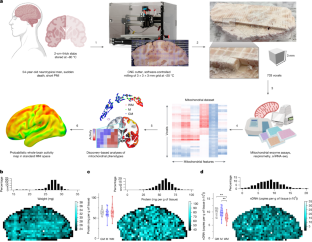2025-04-01 カリフォルニア大学サンディエゴ校
<関連情報>
- https://today.ucsd.edu/story/sending-microbes-to-space-could-improve-astronaut-health
- https://www.sciencedirect.com/science/article/pii/S0092867425001084?via%3Dihub
国際宇宙ステーションは、使用パターンによって駆動されるユニークで極端な微生物・化学的環境を持っている The International Space Station has a unique and extreme microbial and chemical environment driven by use patterns
Rodolfo A. Salido, Haoqi Nina Zhao, Daniel McDonald, Helena Mannochio-Russo, Simone Zuffa, Renee E. Oles, Allegra T. Aron, Yasin El Abiead, Sawyer Farmer, Antonio González, Cameron Martino, Ipsita Mohanty, Ceth W. Parker, Lucas Patel, Paulo Wender Portal Gomes, Robin Schmid, Tara Schwartz, Jennifer Zhu, Michael R. Barratt, Kathleen H. Rubins …Rob Knight
Cell Available online: 27 February 2025
DOI:https://doi.org/10.1016/j.cell.2025.01.039
Graphical abstract

Highlights
- Microbial sequencing and untargeted metabolomics of 803 surface samples from the ISS
- ISS modules harbor unique microbial and chemical signatures based on human activities
- ISS has reduced microbiome diversity compared with other built environments
- Metagenomic tools aid in assessing microbial risks to astronaut health
Summary
Space habitation provides unique challenges in built environments isolated from Earth. We produced a 3D map of the microbes and metabolites throughout the United States Orbital Segment (USOS) of the International Space Station (ISS) with 803 samples collected during space flight, including controls. We find that the use of each of the nine sampled modules within the ISS strongly drives the microbiology and chemistry of the habitat. Relating the microbiology to other Earth habitats, we find that, as with human microbiota, built environment microbiota also align naturally along an axis of industrialization, with the ISS providing an extreme example of an industrialized environment. We demonstrate the utility of culture-independent sequencing for microbial risk monitoring, especially as the location of sequencing moves to space. The resulting resource of chemistry and microbiology in the space-built environment will guide long-term efforts to maintain human health in space for longer durations.


